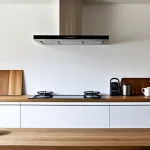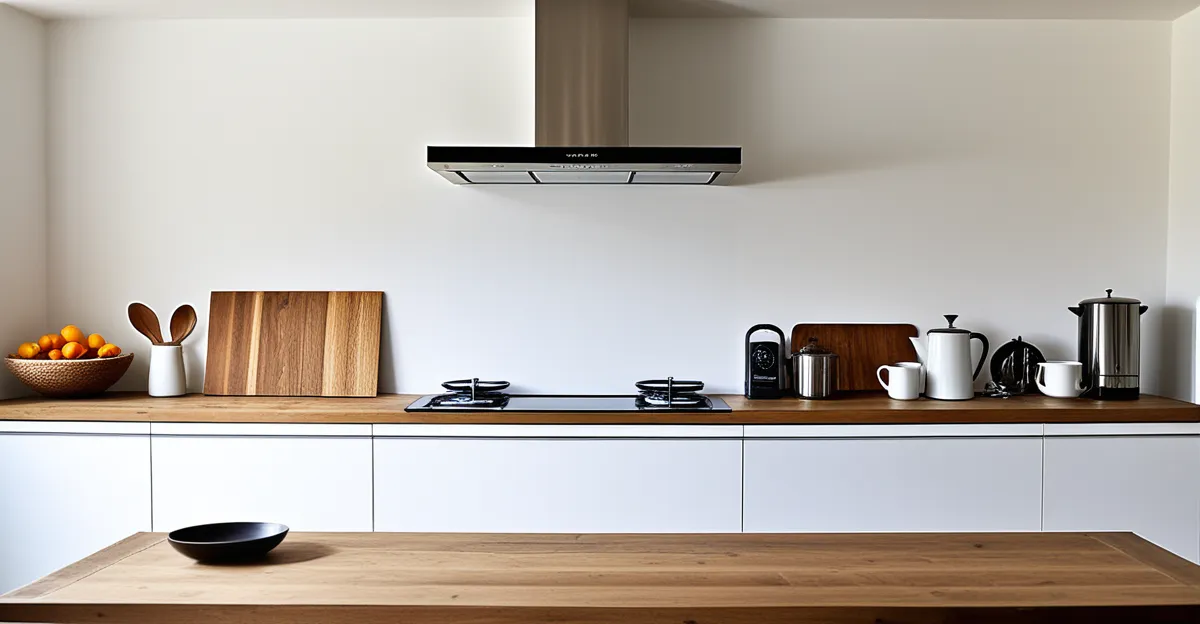Adapting Minimalist Design Principles to UK Home Layouts
Minimalist design in the UK prioritises functional interiors that create airy, uncluttered spaces suited to often compact living environments. Key minimalist home design principles include reducing unnecessary items, using clean lines, and embracing neutral colour palettes to open up rooms naturally. For UK home layouts, this approach is especially useful because traditional properties typically feature smaller rooms and compartmentalised spaces.
Common challenges in UK homes—such as awkward corners, narrow corridors, and limited storage—are addressed by minimalist design UK strategies that maximise usability without overwhelming. For instance, built-in storage solutions hidden behind simple fronts maintain calm surfaces while keeping clutter out of sight.
Also to discover : How Can You Incorporate Vintage Style into Your British Home Decor?
Importantly, minimalist aesthetics do not mean cold or impersonal interiors. Thoughtful layering of textures and warm lighting can transform stark spaces into inviting environments. Incorporating natural materials like wood and soft fabrics integrates warmth, making minimalist homes in the UK both practical and cosy. This balanced approach ensures that minimalist home design enhances UK home layouts by improving flow and functionality while retaining a welcoming atmosphere.
Decluttering and its Impact on Everyday Functionality
A clean and orderly space is central to minimalist living UK. Decluttering is more than tidying; it’s about thoughtful reduction to enhance space organization and daily usability. Start by sorting items into keep, donate, and discard piles, focusing on essentials that support your lifestyle.
Also to discover : How Can Sustainable Practices Improve Your Home’s Living Environment?
Practical storage solutions are vital for small UK rooms. Integrate built-in cupboards and under-bed storage to use every inch efficiently. Transparent containers and labelled boxes aid in maintaining order, making it easy to locate items without adding visual clutter.
Decluttering directly improves functionality by freeing up room for movement and activities. It reduces stress and makes cleaning simpler, turning compact spaces into comfortable, practical interiors. In UK homes constrained by size, embracing a mindful decluttering routine enhances the utility of every area.
Additionally, regular reassessment prevents clutter from creeping back. This ongoing habit sustains the benefits of minimalist living, ensuring spaces remain both functional and inviting. By pairing decluttering with smart storage, homeowners unlock the full potential of their rooms, supporting a lifestyle centred on simplicity and efficiency.
Maximising Limited Space in the UK Home
Small UK homes often challenge residents with limited square footage and compartmentalised layouts. Space-saving solutions UK focus on making every inch count without sacrificing comfort or style. One effective strategy is integrating multifunctional furniture such as sofa beds, nesting tables, or storage ottomans. These pieces serve dual purposes, helping maintain clean lines and reduce clutter, which is essential for minimalist home design.
Open-plan living also plays a key role in enhancing usability. While not always feasible in older UK properties, partial wall removals or creating visual separations with furniture can simulate an open feel, enhancing light flow and improving room connectivity. This transformation aligns with small space tips tailored to traditional UK home layouts where maximising daylight and flow greatly impact perceived spaciousness.
Choosing furniture that adapts to daily activities supports efficient living. For example, foldable dining sets or wall-mounted desks create flexible areas for work and leisure, crucial in compact homes. Throughout, maintaining simplicity and purposeful design reinforces functional interiors UK residents seek.
In summary, blending space-saving solutions UK with thoughtful furniture choices and open-plan concepts optimises limited spaces, proving that living large is achievable even in modest UK homes.
Enhancing Usability Through Thoughtful Minimalist Choices
Minimalist home design thrives on usability and practical home design, which is crucial for maintaining efficient living UK spaces. Prioritising everyday needs means identifying key functions each area must serve. For example, in compact UK homes, separate zones for work, leisure, and relaxation can be created without walls, using furniture placement and lighting to define spaces. This zoning encourages focused activities and helps maintain order.
Minimalist design improves accessibility and flow by eliminating unnecessary obstacles and selecting furniture proportionate to the room size. Clear pathways ensure ease of movement, essential in smaller UK layouts. Additionally, choosing multipurpose items such as wall-mounted shelves or lightweight seating enhances adaptability without cluttering rooms.
Simple colour schemes and consistent textures contribute to a cohesive, calming environment, further supporting usability by reducing visual distractions. Thoughtful minimalist choices balance style and function, making daily routines smoother and spaces more welcoming.
In summary, focusing on usability through minimalist design empowers homeowners to craft interiors that meet real-life demands efficiently, creating a harmonious, user-friendly environment within the spatial constraints typical of UK homes.
Real-World Before and After: Minimalist Design in UK Homes
Minimalist design examples UK showcase how thoughtful application of minimalist home design can transform even the smallest or most awkward UK layouts. Homeowners often start with a cluttered, compartmentalised space lacking flow and natural light. After embracing minimalist principles, their homes reveal clear surfaces, open sightlines, and functional interiors UK that feel spacious and welcoming.
A common transformation involves replacing bulky furnishings with multifunctional pieces tailored to maximise storage and usability without overwhelming rooms. For example, sofa beds and sleek wall-mounted shelves free floor space, while integrated cupboards hide essentials, maintaining a tidy look. Using neutral palettes and layering textures adds warmth, offsetting any coldness minimalist design might risk.
Case studies highlight how removing unnecessary partitions encourages open-plan living, boosting light circulation and visual connection between zones. These changes increase flow, making daily routines smoother and spaces more adaptable.
Experts advise focusing on essentials to avoid overfurnishing—a key lesson many UK homeowners learn during their transformation. This focused reduction elevates functional interiors UK, showing how minimalist design can enhance small home layouts, balancing style with practical living needs.
Real-world before and after minimalist homes prove that with intention and care, minimalist design UK is not only achievable but profoundly beneficial.
Adapting Minimalist Design Principles to UK Home Layouts
Minimalist design UK focuses on simplicity, function, and clarity, making it ideal for the varied challenges posed by UK home layouts. Key principles involve stripping back to essentials, emphasising clean lines, and using neutral colours to visually expand compact or compartmentalised spaces. Such design encourages prioritising function, ensuring interiors serve daily needs without excess.
A primary challenge in UK homes is often the presence of awkward corners and small rooms that limit flow. Minimalist home design addresses these by creating functional interiors UK through smart planning—such as using streamlined furniture that fits the scale, and introducing built-in storage to reduce clutter and maintain clear surfaces. These techniques prevent the feel of confinement common in older properties.
Importantly, minimalist aesthetics do not mean sacrifice of warmth or personality. Through texture layering—like wood finishes and soft fabrics—and warm lighting, minimalist design can enhance comfort while preserving a sleek look. This balance ensures that minimalist design UK is practical yet inviting, adapting smoothly to distinct UK home layouts. The result is spaces that feel both spacious and welcoming, aligning beauty and utility in everyday living.











